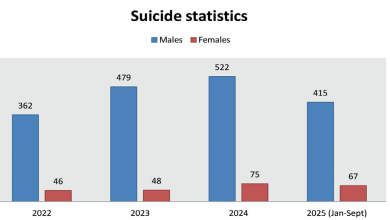Maize prices reduce buyers’purchasing power
Amid hunger that has reached every corner of the country, people like Agnes Banda are struggling to buy maize in Agricultural Development and Marketing Corporation (Admarc) markets. The State-produce trader is selling the grain at K790 per kilogramme (kg), translating to K39 500 per 50kg bag. This is, however, equivalent to prices that private traders are offering in informal markets.
For the Chiradzulu-based single mother of one, who survives on a business of fritters, maize and basic foodstuffs are beyond her reach.

She said: “The price is not different to that of private traders. There is no difference buying from traders.
“Actually, the prices are exorbitant. And, I also have to deal with escalating prices of basic foodstuffs.”
Banda laments her situation, describing it as hard-knock life for poor Malawians, whose dwindling incomes keep shrinking further.
She said: “You wake up every day and find that prices of basic commodities are escalating. When you look at the prices of such basic necessities and the need to have maize in your home, you are left confused.”
According to Banda, when Admarc was scheduled to open its markets, the expectation was that its prices would be lower than those that private traders offered.
One Thursday, Banda went to purchase a five kg of maize at Sedi Market which she said would only last her less than a week.
“This means I will have to prepare porridge for breakfast and then prepare lunch and dinner with the same,” she said.
Elsewhere, the hunger situation has seen householdswho cannot afford to buy maize, eat ing poisonous foodstuffs they fetch in river banks and the bush.
These are the stories that bother Clement Makawa from Mitundu in Lilongwe.
He fears his life would slowly slip into a horrible state.
“I am struggling to make ends meet already and with such maize prices, I find them exorbitant. After all, they are not different from what the private traders are offering,” he lamented.
Makawa, who survives on pieceworks, has two children.
“To feed a family of two is not easy. Now, how can I afford maize at the moment?” he said.
Mary Wisikesi from Salima on Friday said what bothers her is that there seems to be no light at the end of the tunnel.
She said: “I have to buy a kilogramme of maize to feed my family yet I also need basic stuffs in the house.”
Such desperation is what Jonathan Katunga from Machinga also faces.
“You are left stranded on what you need to buy between maize and other necessities,” he lamented.
In its September 2024 Malawi brief, the Famine Early Warning Systems Network (Fewsnet) states that Admarc maize prices, which are similar to those of private traders, are restrictive for poor households.
Part of the brief reads: “Below average supplies are driving food prices up, forcing Admarc to raise maize prices in September from K600 to K790 per kg, almost equal to, or above prices set by private traders. This will further restrict food access for very poor and poor households by reducing their purchasing power”.
According to Fewsnet, the country is facing a negative balance in maize supplies with overall production lower than a five-year average and informal imports insufficient to offset the deficit.
The situation has resulted in both Admarc and National Food Reserve Agency purchasing less than 70 000 metric tonnes (MT). Amid the hunger situation, the country requires 600 000MT of maize for humanitarian purposes, translating to K357.6 billion.
In a written response on Friday, agriculture economist Steven Kayira said while reducing maize prices would be ideal, poorer households would still find it challenging to make purchases.
As such, he said the best alternative would be perfecting social support and protection programmes to ensure poor households are cushioned.
Kayira said: “Considering that even at reduced prices, most of such households would still not afford, there is need for more support and proper targeting in the social protection programmes.
“These programmes include cash transfers and food assistance which would provide direct support to households in need, ensuring their access to a variety of foods.”





